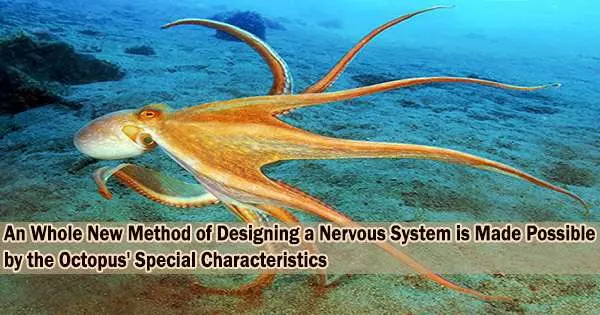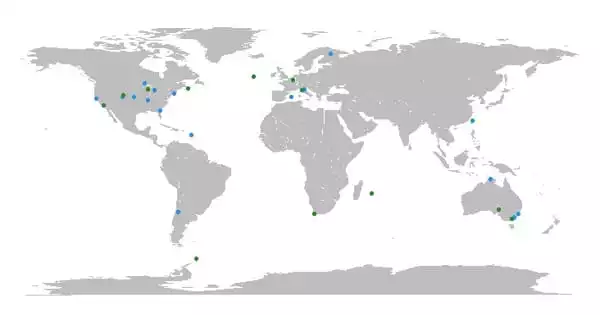Octopuses are invertebrate animals with eight limbs that are more closely related to clams and snails than to humans. Even so, they are capable of a wide range of complex activities thanks to the development of complex neurological systems with as many neurons as those found in canine brains.
Melina Hale, PhD, and other experts in the field believe that this implies that they offer a fantastic opportunity to investigate how different nervous system structures can perform the same fundamental duties of limb sensation and movement.
Now, in a new study published on November 28 in Current Biology, Hale, William Rainey Harper Professor of Organismal Biology and Vice Provost at UChicago, and her colleagues have described something new and totally unexpected about the octopus nervous system: a structure by which the intramuscular nerve cords (INCs), which help the animal sense its arm movement, connect arms on the opposite sides of the animal.
The shocking finding offers fresh information on the independently developed intricate neural systems of invertebrate species. It can also serve as inspiration for new autonomous underwater technologies or robotic engineering in general.
“In my lab, we study mechanosensation and proprioception how the movement and positioning of limbs is sensed,” said Hale. “These INCs have long been thought to be proprioceptive, so they were an interesting target for helping to answer the kinds of questions our lab is asking. Up until now, there hasn’t been a lot of work done on them, but past experiments had indicated that they’re important for arm control.”
Octopuses can be a biological inspiration for the design of autonomous undersea devices. Think about their arms they can bend anywhere, not just at joints. They can twist, extend their arms, and operate their suckers, all independently. The function of an octopus arm is a lot more sophisticated than ours, so understanding how octopuses integrate sensory motor information and movement control can support the development of new technologies.
Melina Hale
Hale and her team were able to employ baby octopuses for the study because they were tiny enough to allow the researchers to photograph the base of all eight limbs simultaneously thanks to the support for cephalopod research provided by the Marine Biological Laboratory. As a result, the researchers was able to follow the INCs’ passage through the tissue.
“These octopuses were about the size of a nickel or maybe a quarter, so it was a process to affix the specimens in the right orientation and to get the angle right during the sectioning for imaging,” said Adam Kuuspalu, a Senior Research Analyst at UChicago and the lead author on the study.
The research team initially focused on the larger axial nerve cords in the arms, but they soon realized that the INCs extended past the arm’s base and throughout the animal’s body.
They started to trace the nerves after realizing that not much research had been done to examine the INCs’ anatomy because they anticipated that they would resemble the axial nerve cords in that they would create a ring in the octopus’s body.
Imaging revealed to the researchers that two of the four INCs extend into the octopus’s body, where they bypass the two arms next to them and combine with the INC of the third arm over, in addition to traveling the length of each arm. This pattern means that all the arms are connected symmetrically.
It was challenging, however, to determine how the pattern would hold in all eight arms.
“As we were imaging, we realized, they’re not all coming together as we expected, they all seem to be going in different directions, and we were trying to figure out how if the pattern held for all of the arms, how would that work?” said Hale. “I even got out one of those children’s toys a Spirograph to play around with what it would look like, how it would all connect in the end. It took a lot of imaging and playing with drawings while we wracked our brains about what could be going on before it became clear how it all fits together.”
The results were not at all what the researchers expected to find.
“We think this is a new design for a limb-based nervous system,” said Hale. “We haven’t seen anything like this in other animals.”
The researchers don’t yet know what function this anatomical design might serve, but they have some ideas.
“Some older papers have shared interesting insights,” said Hale. “One study from the 1950s showed that when you manipulate an arm on one side of the octopus with lesioned brain areas, you’ll see the arms responding on the other side. So it could be that these nerves allow for decentralized control of a reflexive response or behavior. That said, we also see that fibers go out from the nerve cords into the muscles all along their tracts, so they might also allow for a continuity of proprioceptive feedback and motor control along their lengths.”
The group is now running studies to determine if they can answer this question by analyzing the physiology of the INCs and their special structure. Additionally, they are examining the neural systems of other cephalopods, such as squid and cuttlefish, to determine whether they have anatomical similarities.
Ultimately, Hale believes that in addition to illuminating the unexpected ways an invertebrate species might design a nervous system, understanding these systems can aid in the development of new engineered technologies, such as robots.
“Octopuses can be a biological inspiration for the design of autonomous undersea devices,” said Hale. “Think about their arms they can bend anywhere, not just at joints. They can twist, extend their arms, and operate their suckers, all independently. The function of an octopus arm is a lot more sophisticated than ours, so understanding how octopuses integrate sensory motor information and movement control can support the development of new technologies.”
The study, “Multiple nerve cords connect the arms of octopus providing alternative paths for inter-arm signaling,” was supported by the US Office of Naval Research (N00014-22-1-2208). Samantha Cody of the University of Chicago was also an author on the paper.
















